Compared to the rest of the modern Eco-insulation, the most economically favorable, convenient and clean material. Some more than 10 years ago, no one knew about her at all, but today Ekovata is actively used in the construction of private houses, hotels and towns. In this article, we will describe in detail about the advantages of this material, as well as how to insulate the house of Eclaw with their own hands.
General characteristics
The composition is rather simple - by 80%, it consists of cellulose obtained by processing waste paper. Cellulose is characterized by good thermal insulating characteristics, and also has suitable mechanical characteristics to provide homogeneous seamless in one layer. However, cellulose has a number of shortcomings - it can burn, rot and absorb moisture. For this, there are special additives - boric acid and a bora in equity.
Boric acid is responsible for the durability of the material and its protection against insects, rodents, mushrooms and mold. This is a powerful disinfection for cellulose. Boric acid treatment makes Eco-stable in this regard than minvat or polystyrene foam plates that often spoil mice and beetles.
The bora is a powerful flame retardant that protects EcoWhat from fire. As a result of the processing of the Bura fire safety, the eco-water decreases to the level of G2, that is, it is tweet, but does not burn. Of course, the chimneys and heating boilers are not recommended, but it is not better suitable for roofs and overlaps between floors.
Main technical specifications Equata:
- low thermal conductivity;
- high density;
- combustion class G2 according to GOST 30244;
- smoke formation - group D2;
- high vapor permeability;
- does not violate natural ventilation.
Cellulosic EcoWat is produced in the form of compressed plates, but initially it is loose and bulk. It is formed in the stove for the convenience of transportation and storage. Before use, the plates soften and flourish, making Eclaw again loose. At the same time, each stove increases in the amount of several times.
Test for burning and soundproofing of the insulation of EcoWati:
Advantages of Ekwata
If you compare EcoWhat with other popular thermal insulation materials, then at first glance, special differences will not be found. But still, this material has a number of their advantages that allow you to use it during the construction of framework and any other houses.
Advantages of Eco
- Absorbs and quickly evaporates moisture. Low breathability and vapor permeability are equally allowed to absorb water, but in contrast to the similar ability of mineral wool, the absorption is not affected by the thermal insulation abilities of the material. So, if the minvatu is moistened only by 1%, its thermal conductivity will increase by 9%, while eco-wing, moistened by 25% will lose just 5% of thermal conductivity.
- Cellulose can not only absorb moisture, but it is also easy to evaporate it without consequences for the structure of the material. When erecting the frame house and high-quality ventilation of the walls of the EcoWat, it will support a consistently comfortable level of indoor moisture.
- In this regard, the material is not recommended to be used to insulate the base and oversight overlaps, since there is always an increased level of humidity.
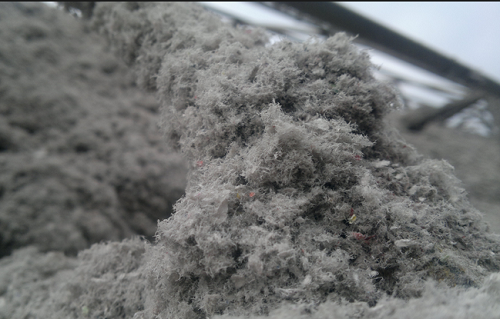
- Equata allows you to create a seamless insulating layer. The loose homogeneous mass completely fills the internal overlap compartments, as a result of which the cold bridges simply nowhere to form.
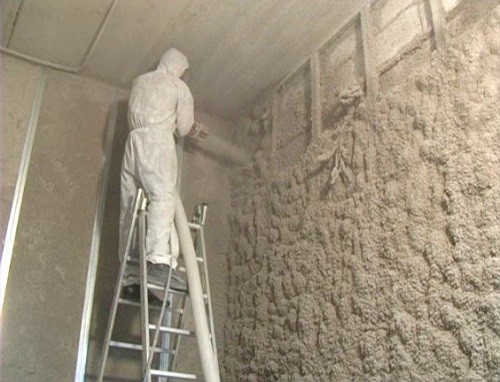
- The insulation guarantees good sound insulation - the thick layer of cellulose reliably absorbs most of the noise, so this type of insulation is perfect for the construction and finishing of houses near the busy trails. In this regard, it is much better than expanded polystyrene, because it has elasticity and is able to absorb regular sound waves from the outside.
- Non-aggression - as already mentioned above, Equata does not know how to burn, thanks to the processing of flames.
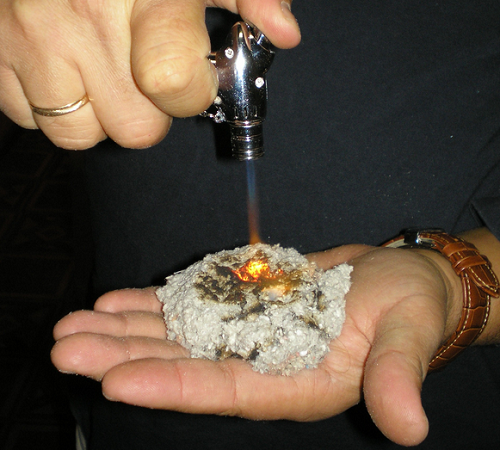
- In its name, Ekwata concluded its most important feature - ecology. It is safe for humans, animals and the environment. In fact, it is paper treated with harmless substances that do not evaporate. Polystyrene foam in turn highlights harmful substances during operation.
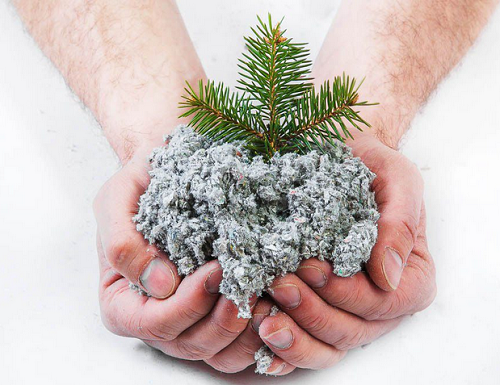
Disadvantages of EcoWati
It would be simply wonderful, do not have an eclaw of shortcomings, but, unfortunately, and in this barrel, honey did not cost without a spoon of tar. Judging by the reviews, the disadvantages of EcoWati is sufficient.
Disadvantages of EcoWhat:
- The good thermal insulation properties of the material over time disappear - thermal conductivity increases due to the decrease in the emotion volume. It simply falls and the lower layers are pressed under the pressure of the upper. So the insulation can lose up to 20% of the volume, so experts advise to lay a little more wool than necessary.
- Also, thermal insulation suffers from behind the absorbent moisture - for the year of the eco-house absorbs approximately 1% water, losing from 9% to 15% of the thermal conductivity coefficient. To avoid this, you should take care of high-quality ventilation of the walls.
- Installation of eco-houses require special equipment and skills, especially if we are talking about a wet method (a little later).
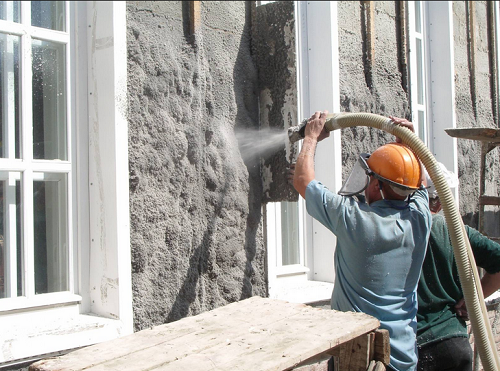
- When laying, the eco-house is highlighted a lot of dust, so it is necessary to purchase a good respirator, glasses and rob (polyethylene cape, himmetum).
- With a wet method of installing an eco-board, it dries long - depending on climatic conditions, this period can stretch from 24 hours to 72 hours or longer.
- Eco-rigidity is much lower than that of polystyrene foam insulation, so it cannot be used for the installation of frameless heat insulation when installing floor screeds.
- If you warm up vertical structures with low density (less than 65 kg / sq. M. M), there is a strong probability shrinkage with the formation of unheated voids.
- It is not recommended to insulate the eco-art surface located in close proximity to open fire or heating devices, including chimneys or fireplace pipes. The regular effect of hot air will cause pulp. In these cases, asbestos-cement or basalt plates with a foil layer are used as additional protection, which effectively reflects the heat.
Methods of insulation eco-art
The insulation of houses is made in two ways: wet or dry. Between them there are a number of differences, both on the technique of execution and the operational characteristics of the heat insulating layer.
In industrial purposes, a wet insulation for walls and laying of dry material injected by a compressor is mainly used - for floors or attic floors. The dry method can be realized on its own, adapting to this to the remedies.
Wet way
The wet method of insulating an eco-art (photo) is a spraying of cellulose wool moistened in the adhesive composition on a warmed surface. As a result, a rather dense homogeneous coating is obtained, which, after drying, provides not only high-quality protection from the cold, but also does not let out of foreign sounds inside the house.
As a binder, a lignin is used, which allows the eclash to be easily glued to any surfaces. Fixing an emotion under high pressure, you can create a thermal insulating layer with a density of 50 to 65 kg / cubic meter. In this way, you can warm brick buildings quickly and efficiently - it is only necessary to make a clamp of wooden rails or a metal profile and apply to Eco.
After drying the layer, the emotes of the excess can be cut off, dry and reinstall. Thus, when using this insulation, no waste remains at all.
The only drawback of this method of insulation is that the cost of services of the working brigade or the rental of the appropriate equipment will no longer. The price of the insulation is an eco-water taking into account the adhesive substance will also be quite high. If you need to warm up complex or suspended structures, a ceiling or too smooth surfaces, it will be necessary to add additional substances that enhance adhesion to the adhesive, which will fall into additional costs.
Dry fashion
Dry method, as you could have guess, does not imply the use of adhesive substance. Flusted EcoWhat fill the emptiness between the walls and the cuttings compartments on horizontal surfaces.
Break through the heat-insulating material using the nozzle for a construction mixer, placing a pressed piece into a large plastic container. All the necessary places are filled with a mound manually or under pressure with the blower. Mixed wool trambed until the layer is well absorted.
To observe all the norms of insulation, you should remember the simple formula: M \u003d S * L * P, where M is the necessary mass of the insulation, S - an area of \u200b\u200bthe compartment, L - the thickness of the Eco-layer, and the R - Eco-line density (45 kg / cubic meter - for horizontal surfaces, 65 kg / cubic meter - for vertical).
Professionals injected eco-ohovat with a compressor. For this, the crate should be fully shocking with a casing material, for example, OSB sheets, a dense film or kraft paper. In the maximum top of the casing, a hole with a diameter equal to the diameter of the compressor hose is made. Then the end of the hose is covered in the hole and the internal space is filled under pressure. Such a blatant eco-friendly eco lands on each free corner and gives a reliable thermal insulating layer.
For a more complete understanding of the process, we propose to watch the video "Equata: Master Class on Warming":
Instructions for warming an eco-water dry way
We suggest to consider the phased insulation of EcoWatha on the example of a skeleton house, covered by OSB sheets.
The following materials and equipment will be needed for work:
- vacuum cleaner garden with 2 kW;
- large plastic container (trough, bucket);
- corrugated tube with a diameter of 63 mm and 6-7 m long;
- stationery tape or rubber tape;
- drill with a nozzle to create holes in an OSP 72 mm and a nozzle for a mixer;
- actually, the Eco-Owata itself (the price is approximately 500 rubles / bag, for our house 7.5x7.5 m required to buy an "Equata" insulation in the amount of 100 bags).
Preparation of equipment
To make a compressor for injection is an eco-friendly, it is necessary to re-equip the garden blower.
How to do it:
- Disconnect part of the blower and stop the terminals from it to the main part, otherwise the device will not turn on, and the long 7-meter hose will lose power.
- With the help of buds, remove the teeth going on the pipe connections to the garbage collector. You can not delete them, but the risk is that EcoWhat will be clogged in this place.
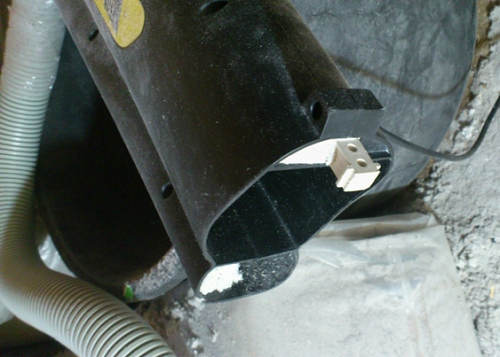
- Attach the corrugated hose to the garbage disposal. To do this, it is enough to attach a corrugation and redeemly climb it with a scotch. It is better to use isolate, because it is more powerful, and the tape from pressure and dust can weaken.
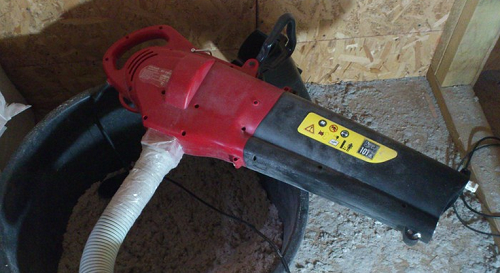
- Put on top of the corrugation segment of a cotton glove - a wristman without fingers (you can just wind around the rag). It is necessary in order to take eco-water dust from the gap during the strangulation between the hose from the hose.
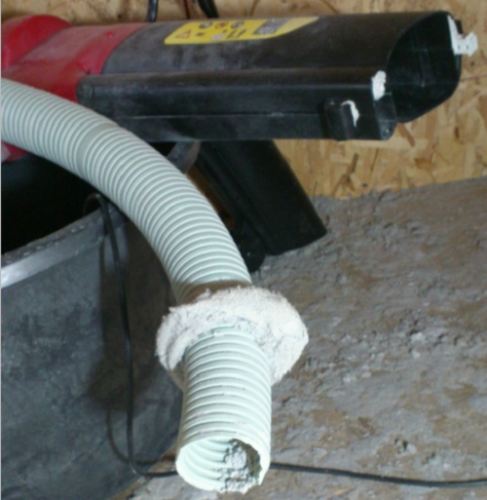
When everything is ready, you can proceed to dry insulation.
Wall insulation
A hole for the compressor hose should be made with a diameter of 70-75 mm at 5-10 cm from the ceiling.
Progress:
- Pour the eco-tank into a large capacity by filling it with 1/3.
- Pretty flick the material by the nozzle for the mixer. As a result of Eco-water, the container will fill the container to the edges.
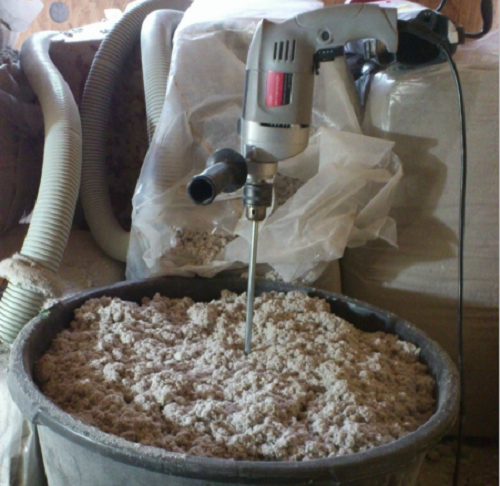
- Insert the corrugated hose to the door done under the ceiling and push it so much so that it does not take to the bottom of 30 cm (it is better to immediately make markup on the hose, donate all outside the wall).
- Seal the gap in the opening of the wind, so as not to fly dust.
- Turn on the blower and gradually start sucking from the bucket of EcoWhat (it takes two to work - one holds the hose by the wall, the second one disassembles the eco-style).
- According to the characteristic sound, it is possible to understand when the eco-house will come out of the pipe inside the wall. When this happens, disconnect the blower and tighten the 50 cm hose, compact the gap and repeat the spin. Enter so every time the hose does not completely come out.
- Last time insert a 1 cm hose and fill the inner space of the wall until it stops.
- Close the holes and proceed to the finish finish of the room.
Floor insulation
To insulate the floor, you can simply pour eco-eco-empty, distributing on compartments between lags. In no case, do not lay the eco-friendly plates - all operational characteristics are manifested only after whipping the mass of the mixer.
According to the reviews, the EcoWhat is better to put the wet method, because it guarantees a more durable and functional thermal insulation coating.


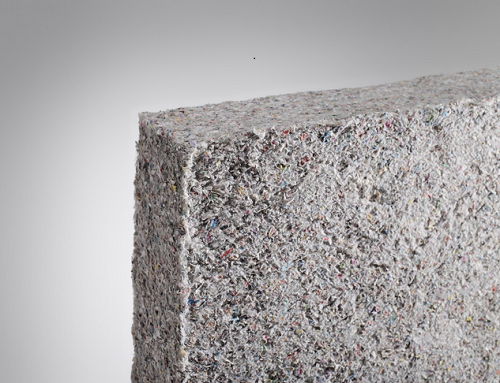
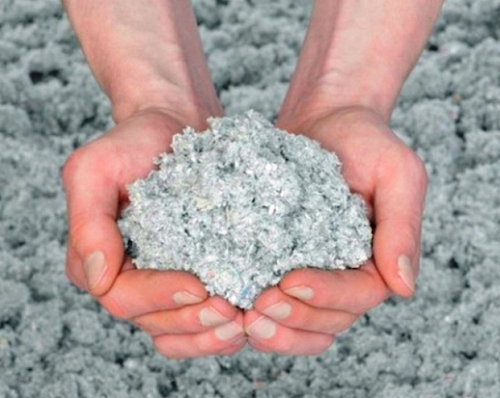
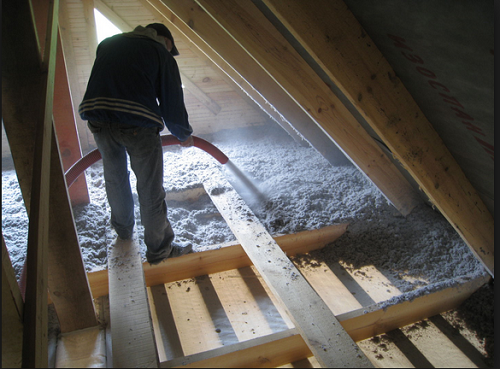
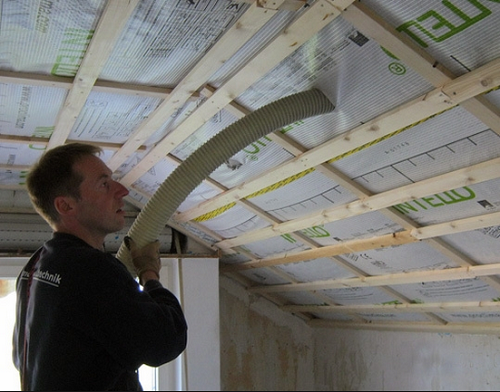
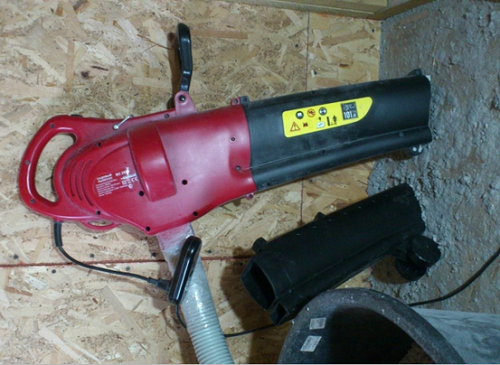
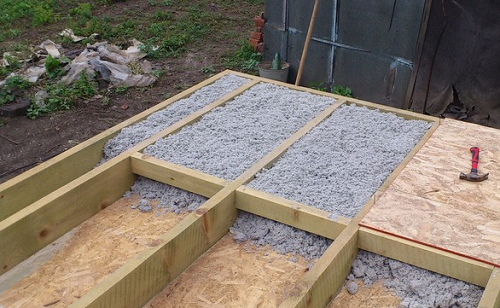

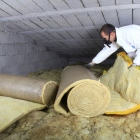
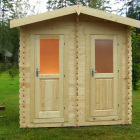



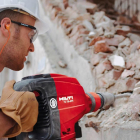
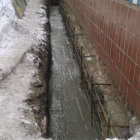
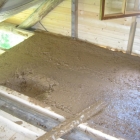
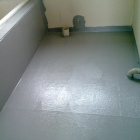
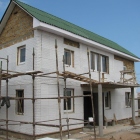
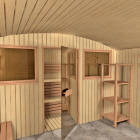
 Start a discussion ...
Start a discussion ...